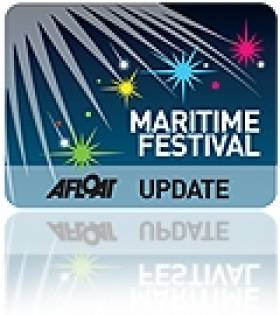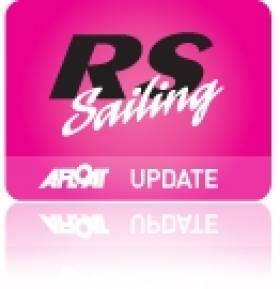Displaying items by tag: Coleraine
Coleraine Marine Firm, Tony's Marine Service (TMS), Celebrates 25 Years in Business
Tony's Marine Service (TMS), a Northern Ireland marine engine and boat service specialist is celebrating 25 years in business in 2015.
Located in Coleraine on the North Coast of Northern Ireland, TMS was founded in 1990 by local man Tony Hodges.
TMS offers repairs, servicing, diagnostics, winterisation, boat modification and upgrades, valets and storage to private boat owners and clients across the public and private sectors.
It has an on-site chandlery store which stocks a selection of chandlery goods, safety equipment and maintenance products.
Operating under its own Xtreme Boat Sales brand, TMS also offers a range of boats for purchase and is the sole distributor in Ireland for US-manufactured Glastron sports boats and cruisers.
Hodges, who continues to adopt very much a hands-on approach to running the business, said that 2015 was set to be a very big year for TMS.
"I am very proud that, 25 years after establishing the business, TMS continues to go from strength to strength with new customers coming onboard on a regular basis.
Hodges is planning an exapnsion in his anniversary year and aiming for expanded sales across the United Kingdom, the Republic of Ireland and beyond with some new promotions in 2015.
"with the economic outlook now looking more positive than for many years, I believe it is the right time to move the business into a new gear with the clear aim of expanding our operations, both geographically and in scale.
Tony's Marine Service (TMS) was established by Hodges in 1990 after he'd spent several years working as a mechanic at Coleraine Boat Centre on the banks of the River Bann.
TMS moved to its present site in 1992, which now incorporates a purpose-built workshop facility capable of holding up to four boats, an engine re-build room, an office, shop, store and a staff area.
Xtreme Boat Sales, the boat sales arm of TMS, was established in 2004 and operates from the same site.
Coleraine Riverfest Is Ireland's Event Of The Summer
#Riverfest - Avid fans of watersports from across the UK & Ireland will descend on Coleraine on 9-10 August when the Waterways Ireland Riverfest takes place on the Lower Bann River and Christie Park.
On the water, wakeboarding, jetskiing and bare-footing demos will run throughout the day each day with competitive stand-up paddle boarding and sailing, rowing and angling all in the packed family fun programme.
Off the water, an inflatable fun area welcomes kids of all ages, alongside climbing walls, a boat and motor-home display, food and retail areas and the all-Ireland u90kg Strong Man and Strong Woman finals.
Sponsored by Waterways Ireland and supported by Coleraine Borough Council, the event runs 10.30am to 6pm on the Saturday and 12.30pm to 6pm on the Sunday and is free for all the family.
"The Waterways Ireland Riverfest in Coleraine receives our support because it engages more families, young people in waterway recreation in a spectacular and innovative fashion, leading the way with a range of events and activities you cannot experience elsewhere," said Waterways Ireland chief executive Dawn Livingstone.
"Thousands of people have enjoyed the Riverfest and have become great enthusiasts for their watersport and ambassadors for the event, the Lower Bann and Coleraine."
Rob Skelly, owner of The Edge Watersports in Coleraine and one of the event organisers, added: "The Waterways Ireland Riverfest has been a phenomenal success since we launched eight years ago. For 2014, the line-up will be bigger and better cementing its reputation as one of the best watersports events across the UK and Ireland.
"The natural waterway of the Lower River Bann provides a wonderful platform and backdrop for the magnificent displays. Once again we are delighted to be working alongside Waterways Ireland who is as ever supportive and actively promoting recreational opportunities on the inland waterways.
"Coleraine Borough Council are avid supporters of the event contributing since the events inception both financially and with some valued in-kind support, which has assisted the festival extend its land based offering to visitors on this idyllic site adjacent to the River Bann."
Mayor of Coleraine George Duddy met with the festival team by the River Bann to see for himself the wealth of entertainment planned for this year's event.
"Coleraine Borough Council has continued to support the development of this event as it attracts residents and visitors to an important location in the town," he said. "The River Bann provides the focus to this free family fun day, which is a great weekend for families of all ages, while supporting the local businesses to showcase the town for shoppers.
"I look forward to this year's event and congratulate all the teams involved in continuing to develop the Waterways Ireland Riverfest programme, as a significant attraction in the Borough's calendar of events."
For further information click on the Waterways Ireland Riverfest events page on Facebook HERE.
Queen's Coxless Four Top Rankings at Bann Head of the River
#BannRowingHead: Queen's University crews were the fastest at both heads in the Bann Head of the River in Coleraine. The Queen's men's intermediate coxless four set a time of 13 minutes and 19 seconds in the second head - just five seconds slower than the intermediate eight which won the first head. The fastest single sculler on the day was Brendan Smyth of Lady Elizabeth, the old boys' club of Trinity College.
| BANN HOR 2013 | FINAL RESULTS | RACE 1 | ||
|---|---|---|---|---|
| Adjusted | ||||
| Boat Number | Club | Category and Boat | Time | Time |
| 2 | QUBC | M INT 8+ | 00:13:14 | 00:13:14 |
| 1 | QUBC | M INT 8+ | 00:14:09 | 00:14:09 |
| 15 | BELFAST RC | MM 8+ E | 00:15:23 | 00:14:25 |
| 14 | BELFAST BC | MM 8+ E | 00:15:27 | 00:14:29 |
| 19 | LADY VICTORIA BC | MM 8+ F | 00:15:53 | 00:14:34 |
| 3 | RBAI | MJ18 8+ | 00:14:42 | 00:14:42 |
| 8 | BANN RC | MJ16 8+ | 00:14:42 | 00:14:42 |
| 5 | BANN RC | MJ18 4X- | 00:14:51 | 00:14:51 |
| 6 | CAI BC | MJ18 4X- | 00:14:56 | 00:14:56 |
| 9 | BANN RC | M INT 2X | 00:15:09 | 00:15:09 |
| 7 | CAI BC | MJ16 8+ | 00:15:16 | 00:15:16 |
| 12 | BANN RC | WJ18 8+ | 00:15:19 | 00:15:19 |
| 4 | CITY OF DERRY BC | MJ18 8+ | 00:15:21 | 00:15:21 |
| 18 | BANN RC | MM 8+ C | 00:15:51 | 00:15:29 |
| 13 | BANN/LADY ELIZ | MS 2- | 00:15:55 | 00:15:55 |
| 11 | QUB LADIES BC | W INT 8+ | 00:15:58 | 00:15:58 |
| 10 | PORTADOWN BC | M INT 2X | 00:16:01 | 00:16:01 |
| 25 | CITY OF DERRY BC | MM 2X E | 00:17:20 | 00:16:22 |
| 21 | CAI BC | MJ18 2- | 00:17:02 | 00:17:02 |
| 31 | QUB B BC | MNOV 8+ | 00:17:11 | 00:17:11 |
| 24 | CARLOW RC | MM 2X C | 00:17:46 | 00:17:24 |
| 26 | LADY VICTORIA BC | MM 2X E | 00:19:06 | 00:18:08 |
| 22 | CAI B BC | MJ18 2- | 00:18:14 | 00:18:14 |
| 28 | PORTADOWN BC | WJ18 4X- | 00:18:31 | 00:18:31 |
| 30 | QUB BC | MNOV 8+ | 00:18:38 | 00:18:38 |
| 27 | BELFAST RC | WM 8+ D | 00:19:25 | 00:18:44 |
| 32 | BELFAST RC | WNOV 8+ | 00:18:48 | 00:18:48 |
| 23 | BELFAST BC | MM 2X B | 00:18:55 | 00:18:48 |
| 34 | CAI BC | MJ15 2X | 00:19:23 | 00:19:23 |
| 36 | QUB BC | WNOV 8+ | 00:20:09 | 00:20:09 |
| 29 | PORTADOWN BC | WJ16 8+ | 00:20:11 | 00:20:11 |
| 35 | CITY OF DERRY BC | WJ16 2X | 00:23:40 | 00:23:40 |
| BANN HOR 2013 | FINAL RESULTS | RACE 2 | ||
| Adjusted | ||||
| Boat Number | Club | Category and Boat | Time | Time |
| 41 | QUB BC | MINT 4- | 00:13:19 | 00:13:19 |
| 44 | QUB BC | MINT 4+ | 00:13:45 | 00:13:45 |
| 45 | RBAI | MNOV 4X+ | 00:14:03 | 00:14:03 |
| 42 | CAI BC | MJ18 4- | 00:14:15 | 00:14:15 |
| 51 | BANN RC | MJ16 4X+ | 00:14:15 | 00:14:15 |
| 43 | CAI B BC | MJ18 4- | 00:14:21 | 00:14:21 |
| 53 | RBAI | MJ16 4X+ | 00:14:33 | 00:14:33 |
| 47 | CITY OF DERRY BC | MNOV 4X+ | 00:14:38 | 00:14:38 |
| 62 | CARLOW RC | MM 4+ C | 00:15:01 | 00:14:39 |
| 57 | PORTADOWN MCKEOWN | MINT 1X | 00:15:23 | 00:15:23 |
| 54 | CAI BC | MJ16 4+ | 00:15:24 | 00:15:24 |
| 58 | BANN RC MCAFEE | MINT 1X | 00:15:31 | 00:15:31 |
| 56 | BANN RC WHORISKEY | MINT 1X | 00:15:47 | 00:15:47 |
| 48 | CITY OF DERRY BC | MJ18 4+ | 00:15:59 | 00:15:59 |
| 59 | LADY ELIZ SMYTH | MS 1X | 00:15:59 | 00:15:59 |
| 74 | BANN RC | WJ15 4X+ | 00:16:04 | 00:16:04 |
| 61 | LADY VICTORIA BC | MM 4+ E | 00:16:19 | 00:15:21 |
| 72 | BANN RC | WJ16 4X+ | 00:16:47 | 00:16:47 |
| 65 | CAI BC | MJ15 4X+ | 00:16:49 | 00:16:49 |
| 55 | CAI B BC | MJ16 4+ | 00:16:50 | 00:16:50 |
| 60 | BANN RC LEVINS | MS 1X | 00:16:55 | 00:16:55 |
| 67 | CITY OF DERRY BC | MM 1X E | 00:16:58 | 00:16:00 |
| 73 | BELFAST RC | WJ15 4X+ | 00:17:03 | 00:17:03 |
| 70 | BANN RC BARRY | WJ18 1X | 00:17:10 | 00:17:10 |
| 46 | BELFAST RC | MNOV 4X+ | 00:17:19 | 00:17:19 |
| 66 | LAGAN SCULLERS | MM 1X C | 00:17:20 | 00:16:58 |
| 49 | QUB LADIES BC | WINT 4+ | 00:17:36 | 00:17:36 |
| 68 | LADY VICTORIA BC | MM 1X E | 00:18:04 | 00:17:06 |
| 52 | PORTADOWN RC | MJ16 4X+ | 00:18:08 | 00:18:08 |
| 69 | PORTADOWN RC | MJ18 1X | 00:18:37 | 00:18:37 |
| 71 | CITY OF DERRY BC | WJ18 1X | 00:20:57 | 00:20:57 |
#rs – This coming weekend will see the next series of racing for the RS fleets in Ireland, with the annual Sprint event. This event was previously a season closer in Dun Laoghaire Harbour, now moves to this earlier slot, and is kindly being hosted by Greystones SC.
This will be seen by many as a great opportunity to get in some top level boat-handling and starting practice in advance of the Irish Nationals in July. With 10-14 short sharp races and no discards any mistakes however minor will be costly. This year's Sprint event will also include the RS Fevas for the first time.
In marked contrast to the Sprints, indeed at the opposite end of the spectrum, the Northern contingent will be engaging in an altogether different form of racing, the famous Coleraine 24 hour race on the Bann River. Several RS400 teams are entered, and run in shifts through the night, which will hopefully only last 3 hours at this time of the year.
Coleraine Marina. Yacht & Boat Berths & Storage in Northern Ireland
Coleraine Marina complex enjoys a superb location in sheltered waters just one mile north of the town of Coleraine and four and a half miles south of the River Bann Estuary and the open sea. Besides accomodating vessels up to 18m LOA, the modern marina with 105 berths offers hard standing, fuel, a chandlery and shower facilities.
Among one of the oldest known settlements in Ireland, Coleraine is renowned for its linen, whiskey and salmon. Its thriving commercial centre includes numerous shops, a four-screen cinema and a state-of-the-art leisure complex.
Coleraine Marina
64 Portstewart Road, Coleraine,
Co. Londonderry, BT52 1 RS
Tel: 028 7034 4768
Canoeing and Camping on the River Bann in Aid of Cancer Charity
#CANOEING - The Coleraine Times reports that a fleet of canoes will 'Paddle the Bann' in a two-day charity challenge from 26-27 May.
Participants will be canoeing and camping on the River Bann some 60km downstream as far as Coleraine in aid of the Ulster Cancer Foundation, which supports local cancer patients and their families.
Sarah Atcheson from the charity said: “This is a unique and wonderful way to experience beautiful Irish countryside and meet new people, while raising funds for local people who have been affected by cancer.
“No previous canoeing experience is necessary as training will be provided and participants will be under the supervision of qualified staff at all times."
Registration is £25 - which covers tents, camping equipment and canoe usage - and all those taking part are asked to raise a minimum of £225 in sponsorship. Participants will be paddling in two-man Canadian canoes, but it's not required to register as a team.
The Coleraine Times has more on the story HERE.



































































